Home / Weather CATs / CATs Manuals / Background on Natural Phenomena Causing Catastrophes
Background on Natural Phenomena Causing Catastrophes
Table of Contents
When are thunderstorms most likely? – answer
What do severe weather forecast classifications indicate? – answer
Hail Diameter Size Description – read
What is a tornado? – answer
What is the difference between a funnel and a tornado? – answer
When are tornadoes most intense? – answer
Which way do tornadoes rotate? – answer
How is tornado intensity rated? – answer
Enhanced Fujita Scale – EF Scale – table
Wind speed estimate description – table
What is a derecho? – answer
Saffir/Simpson Hurricane Scale – table
Glossary of Hurricane Terms – table
Winter Storm Glossary – table
Glossary of Earthquake Terms – table
Modified Mercalli Intensity Scale – table
Richter Scale – table
Thunderstorms
Thunderstorms affect relatively small areas when compared with hurricanes and winter storms. The typical thunderstorm is about 15 miles in diameter. It lasts an average of 30 minutes. Nearly 1,800 thunderstorms are occurring at any moment around the world. That is about 16-million thunderstorms annually worldwide.
Despite their small size, all thunderstorms are dangerous. Every thunderstorm produces lightning, which kills more people in an average year than do tornadoes. Heavy rain from thunderstorms can lead to flash flooding. Strong winds, hail, and tornadoes are also dangers associated with some thunderstorms.
Of the estimated 100,000 thunderstorms that occur each year in the United States, only about ten percent are classified as severe. The National Weather Service considers a thunderstorm severe if it produces hail of at least .75″, winds of 58 MPH or higher, or tornadoes.
When are Thunderstorms Most Likely?
In the spring and summer months, and typically during the afternoon and evening hours. They can, however, occur year-round and at all hours. Along the Gulf Coast, and across the Southeastern and Western United States, most thunderstorms occur in the late afternoon. In the Plains states, thunderstorms typically occur in the late afternoon and at night.
What do the severe weather forecast classifications indicate?
The severe weather risk predictions are issued each day by the National Weather Service’s Storm Prediction Center. They are classified as slight, moderate, and high.
Each level of risk is expected to produce the following severe weather conditions across an average area of about 50,000 square miles. That is approximately the size of the state of Oklahoma. Since these areas always vary in size, the exact calculations are always different.
Slight Risk – Small numbers of severe thunderstorms with relatively low severe weather coverage. They is also a high probability of from five to 29 reports of 1″ or larger hail, as well as three to five tornadoes. Moderate Risk – A greater concentration of severe weather events, with at least 30 reports of hail 1″ or greater, six to 19 tornadoes, and numerous wind damage reports. High Risk – Widespread severe weather outbreak with 20 or more tornadoes, with at least two of the tornadoes rated EF-3 (158 to 206 MPH winds), as well as 50 or more reports of extreme wind damage (80 MPH or greater velocity).Hail
Hail is a product of thunderstorms. Large hail, by definition, has a diameter of 1″ or greater. When large hail occurs, the thunderstorms producing the hail are classified as severe. Those storms are also capable of producing strong gusty winds, lightning, and tornadoes.
The distance between the freezing level and the ground, the mean temperature of the downdraft air between the freezing level and the ground, are factors that determine the size of the hail stone. Large hail is developed when there is a strong updraft. The thunderstorm updraft must be strong enough to support the weight of the hail stones long enough for them to grow to a large size. The size of hail stones at the point of impact with the earth is affected by the number of updraft cycles and the air temperature at ground level. Warm weather, which is classified as 55° F or warmer, hailstorms tend to produce larger and harder hail. Cold weather, which is classified as 50° or colder, hailstorms usually produces smaller and softer hail.
Hail Diameter Size Description
1/4″ – pea size
1/2″ – marble size
3/4″ – dime size
7/8″ – nickel size
11/4″ – quarter size
1 1/2″ – walnut or ping pong ball size
1 3/4″ – golf ball size
2″ – hen’s egg size
2 1/2″ – tennis ball size
2 3/4″ – baseball size
3″ – teacup size
4″ – grapefruit size
4 1/2″ – softball size
A North American tornado is one of the more severe wind storms that can affect insured property. Only the hurricane equals or surpasses a tornado in severity. Tornadoes occur mostly east of the Rocky Mountains, generally between March and October. Meteorologists caution that tornadoes can occur in any month of the year, if the weather conditions allow formation of the storm.
Tornadoes form when a mass of warm, moist air collides with a mass of cool, dry air above it. The collision forces the warm air upward, creating a low pressure area at the ground. The surrounding air moves in to fill the vacuum.
In severe storms, the cloud tops can rise high into the atmosphere where they reach the level of strong horizontal winds that flow the tops into the classic anvil shape that is often reported around tornadoes. When this happens, more air is pulled upward in something like a chimney effect.
The air moving in toward the “chimney” begins to rotate counterclockwise and then rises in a twisting column of extreme violence. The funnel will form along the base wall of a severe thunderstorm. The funnel may also stay aloft, or it may extend to the ground. If it reaches the ground, the storm is classified as a tornado.
The inside of the funnel is hollow, with the inside pressure much lower than the outside air pressure. The temperature is also low inside the funnel. The low temperature caused water vapor to condense, which gives the funnel its black appearance. Debris caught up in the funnel makes it appear even darker as it moves along its track.
The destructive power of the tornado is caused by the wind. Additional damage can be caused by torrential rain and hail, both of which often accompany a tornado.
What is a tornado?
A tornado is a column of violently rotating winds extending down from a thunderstorm cloud and touching the surface of the earth.
What is the difference between a tornado and a funnel cloud?
A funnel cloud is also a column of violently rotating winds extending down from a thunderstorm, but it does not touch the earth.
When are tornadoes most intense?
Tornadoes which develop from thunderstorms that occur early in the season have a tendency to be the most severe.
Which way do tornadoes rotate?
Tornadoes generally turn counter clockwise with wind speeds that vary from under 100 MPH to about 300 MPH.
How is tornado intensity rated?
It is rated on the Enhanced Fujita (EF) Wind Damage Scale. The original Fujita scale was developed in 1971 by Dr. Ted Fujita of the University of Chicago, Chicago, Illinois, and Allen Pearson, Director of the National Severe Storms Forecast Center, Kansas City, Missouri.
Over time it became apparent that the original Fujita scale needed to be modified to more accurately reflect damages caused by tornados. A group of meteorologists convened and developed what is known as the Enhanced Fujita Scale that takes into account damage to buildings, as well as wind speed. It includes consideration for the type of building damaged and the quality of its construction. During their research the meteorologists determined that lower velocity tornado winds caused significant damage to various types of structures. The wind velocities were adjusted accordingly for the EF scale.
Enhanced Fujita ScaleEF 0 65 MPH to 85 MPH — weak tornado
EF 1 86 MPH to 110 MPH — weak tornado
EF 2 111 MPH to 135 MPH — strong tornado
EF 3 136 MPH to 165 MPH — strong tornado
EF 4 166 MPH to 200 MPH — violent tornado
EF 5 200 MPH and higher velocity — violent tornado
EF 2 to EF 5 tornadoes are grouped as significant storms
EF 3 to EF 5 tornadoes are grouped as intense storms
Note: The rating assigned to a tornado is determined by on-scene observations by National Weather Service survey teams.
Lightning
Lightning occurs in all thunderstorms. It causes several hundred million dollars worth of property damage annually, in addition to killing an average of 93 people and injuring about 300 each year.
The action of rising an descending air within a thunderstorm separates positive and negative charges. Water and ice particles also affect the distribution of electrical charges. Lightning results from the build up and discharge of electrical energy between positively and negatively charged areas.
Most lightning occurs within the cloud, or between the cloud and the ground. A cloud to ground lightning strike begins as an invisible channel of electrically charged air moving from the cloud toward the ground. When a channel nears an object on the ground, a powerful surge of electricity from the ground moves upward to the cloud and produces the visible lightning strike.
Lightning creates thunder by the rapid heating and cooling of air near the lightning channel which produces a shock wave.
Wind
Straight line winds are responsible for most thunderstorm wind damage. Winds in severe thunderstorms can exceed 100 MPH. One type of straight line wind is the downburst. This typically occurs during severe thunderstorms, when a small area of rapidly descending air causes damage that is often equivalent to a tornado.
Wind Speed Estimate Description
25 to 31 MPH large branches in motion
32 to 38 MPH whole trees in motion
39 to 54 MPH twigs breaking off trees
55 to 72 MPH damage to chimneys & TV antennas, shallow rooted trees pushed over
73 to 112 MPH peels surface off roofs, windows broken, light mobile homes pushed or over turned, moving cars pushed off roads
113 to 157 MPH roofs torn off houses, cars lifted off the ground
A derecho is a wide-spread and long-lived wind storm. It is associated with severe thunderstorm frontal systems that move across the continent at high speed. These storms are generally known as convection storms and are visible on radar as a “bow echo” in the storm’s squall line. The derecho has the capability of producing extensive property damage, with winds that can exceed 100 MPH. The storms generally occur in the summer. They have produced continuous wind damage from the Plains, across the Midwest and the Ohio Valley, and as far east as the Mid-Atlantic region.
The hurricane presents one of the greatest severity risks in property insurance. It is one of the more destructive and violent storms on earth. Hurricanes occur in many parts of the world, but our primary focus at PLRB is the storms, which can affect the Gulf Coast and the Eastern seaboard of the United States.
Hurricanes are named to give each storm a clear identity. This practice avoids confusion in issuing warnings about particular storms, especially when more than one storm is in progress. The names are selected by the World Meteorological Organization of Geneva, Switzerland. The name lists operate over a five year period, but it a named storm has been especially damaging the name is retired.
The hurricane season in the Atlantic, Caribbean, and the Gulf of Mexico is June through November. Hurricanes generally form over warm tropical seas, which provide them with the necessary components of heat and moist air. The ocean surface may reach a temperature of 80° F or higher. As the water surface heats, water evaporates rapidly into the air, forming water vapor, a gas. The air above the water is moistened by the gas.
When the weather conditions are correct, this large of moist air begins to rise. Surrounding air is drawn into the column of moist air. When the air begins rushing in, the column begins to rotate in a counter clockwise direction, in the Northern Hemisphere, because of the earth’s rotation. As the system develops the amount of water vapor continues to condense. The process creates heat, which makes the rising column of air warmer. Eventually the condensation forms a cloud and steady rains begin occurring.
During this process the trade winds are carrying the storm generally westward. The intensity will increase and the air pressure may continue to fall. The eye of the hurricane will form when the winds reach about 75 MPH and the pressure falls to a very low reading in the center of the storm system. The eye can range in diameter from 10 miles to 20 miles.
Seawater rises rapidly within the eye of the hurricane, sometimes as much as one meter above sea level. Heavy rains fall, with most of the water coming from the cloud formation surrounding the eye. The wind surrounding the eye has a greater velocity than wind within the eye. Obviously, the wind and rain surrounding the eye of the storm create the damage.
Once the hurricane makes landfall, its energy will begin to dissipate because there is no longer enough warm moist air being fed into the storm system to keep it alive. The hurricane is not benign once on land, however. It can produce inland tornadoes and flooding over hundreds, even thousands, of miles from the point of entry on the coast.
The damages are caused by strong winds and flooding. The coastal flooding is known as storm surge damage. This is where the hurricane’s wave action, and the extremely high tides, carries salt water inland with great force, causing damage in its wake.
Hurricane strength is listed on a scale called the Saffir/Simpson Hurricane Scale.
Saffir/Simpson Hurricane Scale
Category Central Pressure Wind Surge
(millibars)
1 980 or more 74 to 95 MPH 4 to 5 feet
2 965 to 979 96 to 110 MPH 6 to 8 feet
3 945 to 964 111 to 130 MPH 9 to 12 feet
4 920 to 944 131 to 155 MPH 13 to 18 feet
5 less than 920 155 and higher 18 feet and higher
The Saffir/Simpson Rating System DefinedCategory 1 – Maximum sustained winds of 74 MPH to 95 MPH: Damage mainly to shrubs, trees, and unanchored mobile homes; No real damage to other structures; and, Low-lying roads may be inundated.
Category 2 – Maximum sustained winds of 96 MPH to 110 MPH: Some trees blown down; Some damage to roofs, windows, and doors; No major damage to buildings, except mobile homes; and, Most coastal roads under water.
Category 3 – Maximum sustained winds of 111 MPH to 130 MPH: Large trees blown down; Mobile homes destroyed; Some structural damage to small buildings; Windows, roofs, and doors damaged; Serious flooding near the coast; and, Waves batter coastal structures.
Category 4 – Maximum sustained winds of 131 MPH to 155 MPH: Roofs blown off many residences; Heavy damage to roofs, windows, and doors; Flooding extends well inland; and, Major damage to coastal structures from storm surge.
Category 5 – Maximum sustained winds of 155 MPH and greater: Massive damage to windows and doors; Roofs flown off many small buildings; Some complete building failures; Major damage to lower floors of all ocean front structures from storm surge; and, Extensive flooding of low-lying areas.
Glossary of Hurricane Terms Tropical Wave – A westward moving trough of low pressure that sometimes produces significant showers along its path. It may develop into a tropical depression.Tropical Disturbance – A moving area of thunderstorms that maintains its identity for 24 hours or more.
Tropical Depression – A disturbance that has developed a rotary circulation at the surface. It maintains a constant speed of 38 MPH or less.
Tropical Storm – Rotary circulation with a constant wind speed ranging from 39 MPH to 73 MPH. Extratropical – A storm, often a former hurricane, that no longer has tropical characteristics. It may be connected with a frontal boundary in the middle latitudes of the earth. A hurricane or a tropical storm that devolves into an extratropical event may still retain the characteristics of the hurricane or the tropical storm from which it evolved.
Hurricane – Pronounced rotary circulation with a constant wind speed of 74 MPH or greater. Hurricane Eye – A relatively calm area near the center of the storm, lasting from several minutes to an hour or more, and ending suddenly when winds return from the opposite direction, often with even greater force than the first storm winds. Hurricane Watch – Issued when there is a threat of hurricane conditions within the next 24 to 36 hours. Hurricane Warning – Issued when hurricane conditions are expected within 24 hours or less.
Storm Surge – An extremely high tide, topped by violent waves, produced by winds and low pressure associated with a hurricane.
Floods
Flooding can occur in all parts of the United States. Flash flooding is common flowing heavy rains. River flooding is common following heavy rainfall, spring melting, and tropical depressions/storms that have moved inland. Coastal flooding is common following a hurricane.
The hydraulic pressures exerted in a flood are very powerful. As water strikes a structure it causes impact or frontal damage. As the water recedes it creates pressure that can remove the soil supporting the structure, which could lead to collapse.
Tsunami
A tsunami is a series of waves, often following an earthquake, that is caused by the displacement of a large body of water. The event may be in an ocean or a large lake. Causes for a tsunami can include an earthquake, a volcanic eruption, an underwater explosion, landslides, and glacial calvings. The tsunami wavelength is longer than a typical wave at sea. It may look like a rising tide, instead of a crashing wave. The tsunami usually comes in repeating waves that become increasingly deeper as they hit land, and then gradually subside. The event may last minutes or hours.
Winter Storms
Winter storms can occur in all of the United States, except Hawaii. These storms can be as powerful as hurricanes, complete with an eye, and winds in excess of 100 MPH. Typically they involve sleet and freezing rain, which will cause utility lines to break, heavy snow, and high wind on the cold side of the storm’s frontal boundary. On the warm side of the frontal boundary they will typically involve severe thunderstorms with tornadoes, hail, and high wind, as well as torrential rain with flash flooding.
Winter Storm Glossary of Terms
Sleet – Formed when snow falling through the atmosphere encounters a warm layer above the surface. It changes to rain. When the layer is thick enough and cold enough, the rain will form solid ice Pellets or sleet.
Freezing Rain – Formed when snow falling through the atmosphere encounters a warm layer above the surface. The snow changes to rain. If the air becomes cold again near the surface, and is to shallow for ice pellets to form, the rain will become super cooled. It will freeze on contact with the surface. Freezing rain can cause catastrophic damage. The weight of the ice can cause tree limbs to fail and power lines to snap.
Heavy Snow – At least 6″ of snow that falls in a 12 hour period, or at least 8″ that falls within a 24 hour period.
Blizzard – A severe snow storm that lasts for a prolonged period of time with sustained high winds of 35 MPH or greater, or frequent gusts of that velocity, or drifting snow that reduces visibility to about 1/4 mile or less. The length of the storm can vary from hours to days. Typically a strong snow storm moves into the blizzard category after three hours of the high wind with blowing snow. A blizzard can cause a wide variety of damage to property. The risks vary from livestock losses due to suffocation to structural collapse from the weight of ice and snow. Extremely cold temperatures are often associated with a blizzard and will cause property damage to buildings from frozen and bursting water systems.
Earthquakes
No natural phenomena seem to create greater fear in people than an earthquake. We all assume the ground is solid. It will not move. When it moves violently in an earthquake, or temblor, people’s sense of well being is removed. The shock is profound.
The earthquake potential in the United States exists and presents the possibility of a “mega” catastrophe to all lines of insurance. America has sustained some substantial earthquakes in its history along the East Coast (Charleston, South Carolina), in the Middle West (New Madrid, Missouri), and along the West Coast (Northridge, California). As the earth’s continental plates shift, pressures build. When those pressures are relieved an earthquake occurs.
As the plates press against one another, the earth’s crust bends until it breaks, often with violent force. When a portion of the earth’s broken crust snaps back into place, it creates a tell tale line or crack that is known as a fault.
When two of the earth’s plates push against each other, an enormous amount of rock is moved beneath the surface. The movement transmits energy and motion in a wave along and beneath the surface of the earth. This is known as the push wave or the compression wave. It travels at about five miles per second on average.
As the two plates push against each other and the rocks move about beneath the earth’s surface, they rotate. As the rock particles rotate, they transmit energy and motion in a twist wave or a torsion wave. Traveling more slowly than the push wave, the twist/torsion wave moves along at about three miles per second.
Seismic waves are composed of the push wave, which geologists identify as the P wave, because it travels faster and is measure first by seismographic equipment, and the torsion wave, which is identified as the s wave, or sinusoidal wave but more commonly referred to as the secondary wave because it is measured second by the seismographic equipment.
Seismologists measure and plot the seismic waves transmitted by earthquakes. Their seismographs record data, which allows calculation of the power or magnitude of the quake. It is often stated as a Richter Scale reading. Named after Charles F. Richter, the American seismologist who first proposed the mathematical scale in a 1935 academic paper, the scale is an open-ended series of numbers, with each number indicating a magnitude 10 times as great as the number below it. A quake with a magnitude of 6 is 10 times greater in power than a magnitude 5 quake.
Another measurement scale used is the Mercalli Scale. Named after geologist Giuseppe Mercalli in 1902, this scale assigns a value level from I to XII to earthquakes. It is not measured on instruments, however. The Mercalli Scale is used to quantify on-the-spot damage assessments by scientists.
The earth experiences more than 100 earthquakes each month. About a half-dozen occur nearly 400 miles beneath the surface, about 30 occur nearly 90 miles beneath the surface, and about 100 occur within 15 miles of the earth’s surface. Most are quite low in energy. The number of catastrophic earthquakes is low when compared with the total number of shakes occurring on the earth each year.
Earthquake damage depends to a large extent on the strength of the shake and the strength of the structures shaken. A relatively modest quake can destroy buildings that are not well engineered or constructed. A relatively strong quake may cause little or no damage to structures that are well engineered and constructed.
Some quakes also produce seismic sea waves known as tsunamis (A Japanese word meaning harbor wave), which are often mislabeled as tidal waves. An earthquake occurring at or near the sea can create the seismic sea wave, which distributes the energy released from the earthquake. Pulsing through the ocean like a sonic boom, they are often not noticeable because of the long wavelength, but are often disastrous when they reach shore. Walls of water between 6 and 60 feet in height can strike the shore at speeds of up to 500 miles per hour. The tsunami usually will strike in a train of six to seven waves, causing catastrophic damage. The American states of Alaska and Hawaii have experienced disastrous tsunamis, destroying large amounts of property and killing hundreds of people.
Glossary of Earthquake Terms
Earthquake – Officially defined as a temblor or seismic event
Epicenter – Point on the surface that is directly over the hypocenter
Fault – A break in the rock strata or veins that causes a section to become dislocated along the line of a fracture.
G Units – Produced by S waves. A small increase in G units can exert catastrophic stress on structures. Typically G units are small by highly destructive.
Hypocenter – Underground point of origin.
Liquefaction – Occurs when a passing S wave suddenly raises the pressure of groundwater in pores between grains of soil. The ground liquefies, losing strength, causing the failure of structures that are anchored to that soil.
Modified Mercalli Intensity Scale – Named after geologist Giuseppe Mercalli in 1902. It assigns a value level from I to XII to on the spot observations.
Modified Mercalli Intensity Scale
Magnitude Intensity
Under 2.0 I – II
2.0 – 2.9 I – III
3.0 – 3.9 II – V
4.0 – 4.9 III – VII
5.0 – 5.9 IV – VIII
6.0 – 6.9 VI – X
7.0 – 7.9 VIII or higher, up to XII
8.0 – 8.9 Same as above
9.0 – 9.9 Same as above
10.0+ IX or higher, up to XII
Modified Mercalli Intensity Scale Definitions
- Instrumental – Generally not felt by people unless in favorable conditions.
- Weak – Felt by only a few people at rest, especially on the upper floors of buildings. Delicately suspended objects may swing slightly.
III. Slight – Felt quite noticeably by people indoors, especially on the upper floors of buildings. Many do not recognize it as an earthquake. Standing automobiles rock slightly. Vibration similar to the passing of a truck. Duration can be estimated.
- Moderate – Felt indoors by many to most people, and outdoors by a few people. At night, some awakened. Dishes, windows, and doors disturbed, and wall make cracking sounds. The sensation is more like a heavy truck striking the building. Standing automobiles rock noticeably. Dishes and windows rattle alarmingly. Damage is none to minimal/very light.
- Rather Strong – Felt inside by most, may not be felt by someone outside in non-favorable conditions. Dishes and windows may break and bells will ring. Vibrations are more like a large train passing close to a house. Possible slight damage to buildings.
- Strong – Felt by everyone, outside or inside, many frightened and run outdoors, walk unsteadily. Windows, dishes , glassware broken; books fall off shelves; some heavy furniture moved or overturned; a few instances of fallen plaster. Damage slight to moderate to poorly designed buildings, all others receive none to slight damage.
VII. Very Strong – Difficult to stand. Furniture broken. Damage light in buildings of good design and construction; slight to moderate in ordinarily built structures; considerable damage in poorly built of badly designed structures; some chimneys broken. Noticed by people driving in automobiles.
VIII. Destructive– Damage slight in structures of good design, considerable in normal buildings with a possible partial collapse. Damage great in poorly built structures. Fall of chimneys, factory stacks, columns, monuments, walls, etc. Heavy furniture moved.
- Violent – General panic. Damage slight to moderate in specially designed structures. Well-designed structures thrown out of plumb. Damage moderate to great in substantial buildings, with possible partial collapse. Some buildings shifted off foundations.
- Intense – Many well-built structures destroyed, collapsed, or moderately to severely damaged. Most other structures destroyed, possibly shifted off foundations. Large landslides.
- Extreme – Few, if any, structures remain standing. Numerous landslides, cracks, and deformation of the ground.
XII. Catastrophic – Total destruction. Everything is destroyed. Lines of sight and level distorted. Objects thrown into the air. The ground moves in waves or ripples. Large amounts of rock move position. Landscape altered, or leveled by many feet. In some cases, even routes of rivers change.
New Madrid Fault – A fault in the middle Mississippi River Valley that affects the states of Arkansas, Illinois, Mississippi, Missouri, and Tennessee. A series of severe temblors occurred in 1811 and 1812 along this fault. The shocks were felt along the East Coast from about New York City to South Carolina. Geologists consider the New Madrid fault to be active. They believe it is the highest earthquake risk in the United States, outside of California. Geologists warn that central and eastern U.S. geology will transmit the shock waves further, thus causing greater damage that temblor of similar intensity in California.
The Palmdale Bulge – A very active fault located about 40 miles north of the Los Angeles area on the edge of the Mojave Desert. The Garlock and the San Andreas faults merge at this location.
P Waves – Pressure waves which travel deep into the earth, sometimes penetrating through the planet. These waves are a moving compressional shock wave front of energy traveling from particle to particle through rock.
Richter Scale – Names in honor of Dr. Charles Richter, a geologist at the California Institute of Technology, who first proposed the mathematical measurement in a 1935 academic paper. It is a logarithmic scale that records the movement of the ground in microns (26,000 microns = 1″). The scale begins at zero and is open ended.
Richter Scale
Magnitude Approximate TNT Energy
1.0 6 oz
1.5 2 lbs
2.0 13 lbs
2.5 63 lbs
3.0 397 lbs
4.0 6 tons
4.5 32 tons
5.0 199 tons
5.5 1,000 tons
6.0 6,270 tons
6.5 31,550 tons/1.5 atomic bombs
7.0 199,000 tons/9.9 atomic bombs
7.5 1,000,000 tons/50 atomic bombs
8.0 6,270,000 tons/313.5 atomic bombs
8.5 31,550,000 tons/1,577.5 atomic bombs
9.0 199,000,000 tons/9,500 atomic bombs
San Andreas Fault – This well known fault line extends along the California coast from San Diego to the San Francisco Bay region, a distance of about 500 miles. It marks the continental boundary between the Pacific coastal plate and the North American plate. It consists of two separately formed faults. The northern half is older and less active with annual slippage or movement of 1/2″. The southern half of the fault has a slippage of 2″ annually.
Seismograph — Recording on paper of an earthquake.
S Waves – Sinusoidal waves, also known as secondary waves since they are measured by seismographs as the second shock wave of an earthquake. They move with an up and down pattern on the surface. They produce a shear motion at right angles to the direction in which the wave is advancing. The shaking force can knock down structures.
Tsunamis – Energy transmission of an earthquake via water in the form of wave action. If this occurs following an earthquake there is usually a train of six or seven waves. This type of severe wave action is distinguished by lack of any wind associated with the damage caused on shore.
This reference document was produced by PLRB Catastrophe Services, utilizing data and information from the National Weather Service and the U.S. Geological Survey.








